“I like the idea of taking an everyday, innocuous material that people usually throw away, to make works of art, to give value to something that has none.”
Olivier Bertrand’s Figurative Sculptures Come to Life
Olivier Bertrand, an artist with a background in economics and over 15 years of experience in web design, has transitioned to a career as a sculptor, distinguishing himself through his unique choice of medium: cardboard. Largely self-taught, Bertrand began working with this unconventional material in 2019, prompted by a knee injury that left him housebound. With an abundance of packaging boxes in his garage, he initially set out to create a gorilla’s head, but ultimately crafted an entire life-sized animal.
Bertrand’s affinity for cardboard as a sculptural material can be attributed to several factors. One possible influence is his Asian heritage and the passion for origami instilled in him by his mother. Since childhood, he has been captivated by the transformation of a simple sheet of paper, which, through a series of intricate folds, takes on new life as a sculpture—often depicting animals.
Another driving force behind Bertrand’s choice of medium is his commitment to the concept of upcycling, which involves repurposing materials that would otherwise be considered obsolete. Bertrand is drawn to the idea of taking an everyday, seemingly insignificant material like cardboard, often discarded without a second thought, and transforming it into a work of art. In doing so, he imbues the material with new value and challenges conventional perceptions of what constitutes a worthy artistic medium.
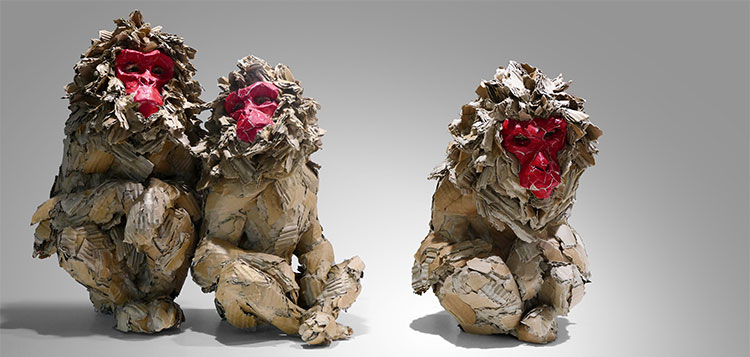
Evolution of Olivier Bertrand’s Artistic Style
Olivier Bertrand crafts figurative pieces that draw inspiration from the animal kingdom, mythological narratives, and the cherished heroes of his youth. Central to his artistic vision is the vivid expression and dynamic movement of his subjects. Bertrand strives to imbue each creation with a sense of life, transforming the experience of the viewer so that they no longer perceive a lifeless, stoic sculpture but rather an animated, living entity. When spectators witness the transformation of mere cardboard pieces into seemingly living beings, Bertrand considers his work a success.
Childhood memories serve as a wellspring of inspiration for the artist, encapsulating the emotions that have captivated him throughout his life. Nature’s creations, particularly the animal world, often hold greater significance for Bertrand than human-made constructs, despite his profession as a sculptor. Additionally, he finds abundant inspiration in the compelling realms of mythology, folklore, and legends, which serve as powerful catalysts for his artistic expression.
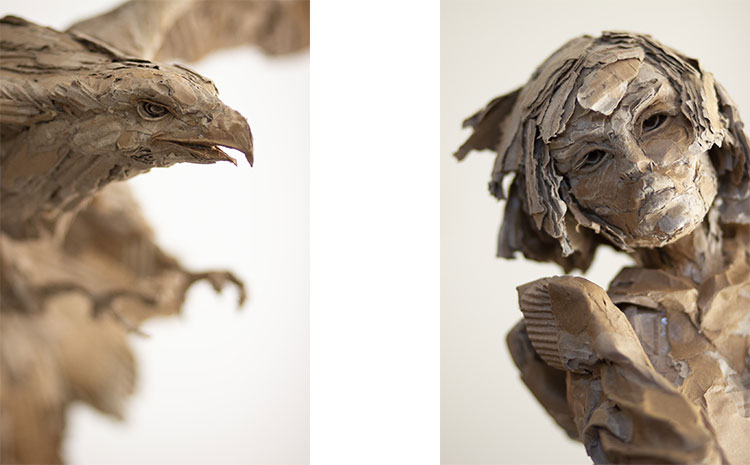
Family, Ambition, and Health: A Glimpse into Olivier Bertrand’s Life
With a relatively brief yet significant four years of experience, Olivier Bertrand has witnessed a notable evolution in his artistic style. The development of his work has transitioned towards a more raw and less academic approach, allowing him to focus on essential details rather than attempting to capture every nuance. Bertrand does not strive for a faithful reproduction of reality, and he refrains from working with models. Instead, he is inclined to accentuate postures and attitudes to achieve more expressive creations. This method is not entirely novel, as eminent sculptors of the past have similarly employed the “contrapposto” technique in their depictions of Greek heroes and deities.
Bertrand remains a relentless perfectionist, never fully satisfied with any of his creations. He continually seeks to surpass his previous works and strives for self-improvement. Nonetheless, if compelled to select a piece that holds a special place in his heart, it would likely be ‘Symbiosis.’ This sculpture, created during the Lucca Art Fair in Italy, dedicated to paper art, is particularly significant as it was Bertrand’s first collaborative effort with a team. The process of successfully completing this imposing piece alongside an ensemble of strangers, who later became friends, lends a unique and cherished significance to ‘Symbiosis’ compared to his other works.
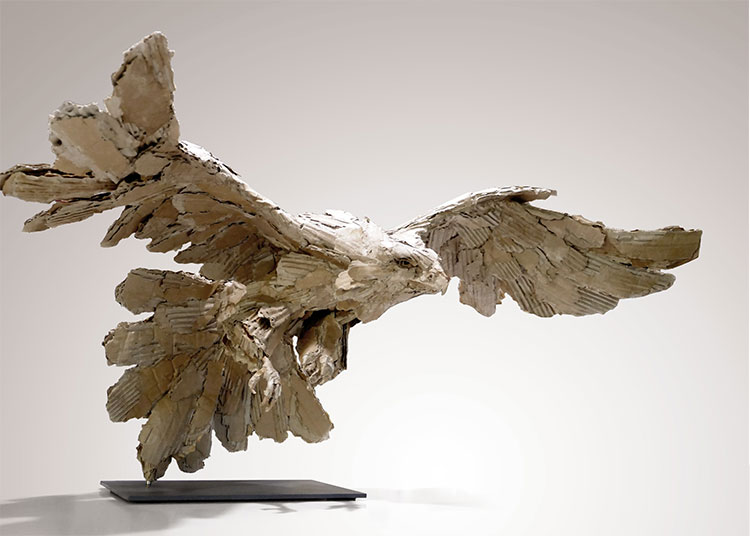
Olivier Bertrand’s Vision for a Cardboard Wonderland
Olivier Bertrand thrives in a home-based work environment, enveloped by the presence of his family. Rather than seeking seclusion, Bertrand finds solace in the company of his loved ones, drawing inspiration from the bustling activities of his children, wife, and even his attention-seeking cat. This preference may stem from the inherently solitary nature of the artistic process, which often leads to isolation. In embracing his family, Bertrand avoids becoming an inaccessible hermit, akin to a bear in its cave.
Bertrand envisions a future project where his creations occupy and dominate an entire space, extending from room to room, cascading up staircases, and even spilling outdoors. He aspires to collaborate with a team to bring this ambitious vision to fruition.
Art consumes a significant portion of Bertrand’s life, providing him with immense fulfillment, but also demanding sacrifices. He acknowledges the exclusivity of his passion and its potential to disconnect him from other aspects of life, urging caution. Interestingly, Bertrand has observed a positive impact on his health since devoting himself entirely to sculpture. For over 25 years, he suffered from an autoimmune disease that affected his liver and digestive system. However, since transitioning from his previous occupation, he has experienced remission, leading him to muse that art may have saved his life.
While Bertrand does not engage in formal meditation practices, he believes that his work may induce a meditative state, contributing to his overall equilibrium. Nonetheless, he admits that these thoughts are speculative, as he has not explored this notion in depth.
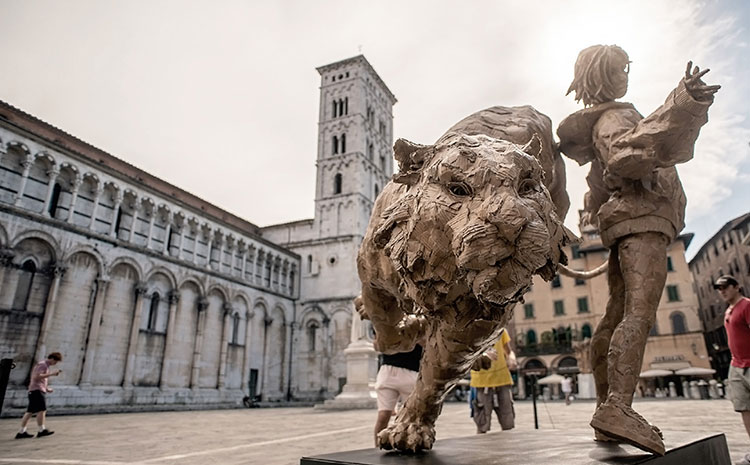



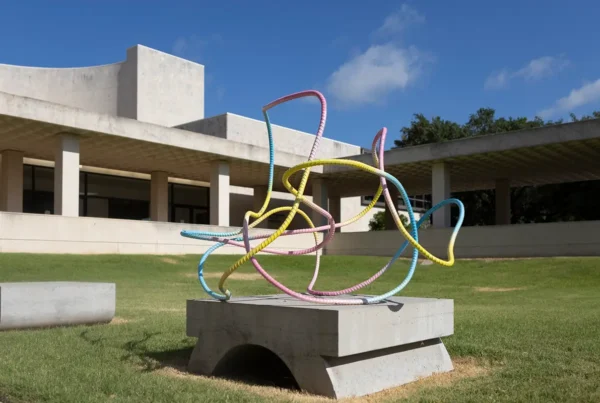

The Best Contemporary Art Blog — AATONAU!
http://bitcoads.info
https://clck.ru/34TxBX